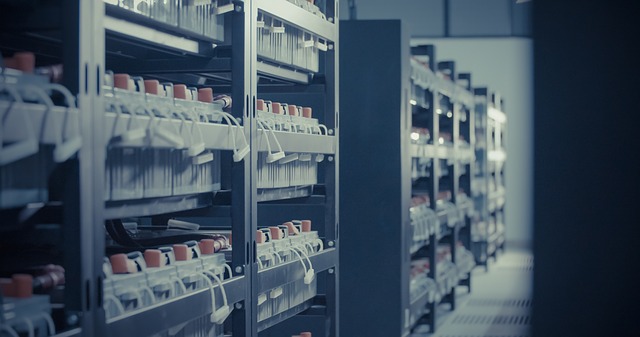Puffed LiPo Battery Disposal Analysis
Nov 27, 2019 Pageview:2474
LiPo batteries are known to swell up and get puffy over time. During that situation, one will wonder what they should do now. Fret not; this article will explain what causes a swollen LiPo battery and how that situation can be fixed.
Batteries generate gas despite if you use them or not. This gas is produced through the process of electrolyte decomposition. In this process, the electrolyte in the battery begins to break down chemically. Hence, in the LiPo battery, the breakdown of the electrolyte will result in the production of oxygen and lithium with oxygen being produced in excess. This is one of the causes of a LiPo battery swelling.

How Do You Dispose Of Puffed LiPo Batteries?
There are a couple of techniques used in order to dispose a LiPo battery. Previously, few battery manufacturers would suggest inserting the battery in saltwater in order to discharge them. However, this method of disposal remains to be challenged as it is not only dangerous but also ineffective. It is an extremely slow process that can take weeks and in this time corrosion can take place on the terminals of the LiPo battery. This results in the leakage of the electrolyte solution in the water, which is not good since the battery acids can be very toxic and reactive.
Another method, and a much safer one, is to discharge your LiPo battery by connecting the terminals of the battery to a device that can be used like an effective electrical load, for example a lightbulb. When using a lightbulb, a halogen bulb of 20W should do the trick. It can quickly discharge the battery. Once the bulb doesn’t light up, that is when you know that the battery has been completely discharged. You should discharge the battery until it reaches zero volts since LiPo batteries are safer when they carry no voltage. Plus, you need to make sure that no charge is able to build up again.
Following the steps below is how you can dispose your LiPo battery safely:
1. Place the LiPo battery inside a bucket that is filled with sand and take it outside.
2. Connect your small lamp or LED bulb to your battery and allow it to completely drain. Once the connected device stops glowing, leave it connected for one whole day.
3. Next cut the battery’s connectors off and the wires should be stripped.
4. Connect the black and red wires so a short circuit can be created and avoid built up of any voltage.
5. The LiPo battery has been stabilized successfully.
You might want your battery to discharge quickly, but in reality it is advised to discharge the battery in a gradual process. The slow process of discharging will produce less amount of heat; hence it is safer than using a high load or motor connection to drain the battery quickly. Once the battery has been discharged completely, you should take it to your closest battery recycling area. You can call ahead or check online to find the drop-off point for damaged or drained batteries that need to be recycled. Plus, many waste facilities accept dangerous wastes items such as batteries. You should never throw batteries in your normal trash, even if they have been completely discharged. Always make sure you get rid of them in a responsible and safer manner.
Can You Fix A Puffed LiPo Battery?
Firstly, it is important to know that a LiPo battery that is swollen is of not much use. It is impossible to fix it; hence you should purchase a new one to replace the one you have as soon as you can. The second order of business would be to dispose your battery properly once you decide that you aren’t going to use it anymore. The whole process of which is explained above.
On the other hand, you can still use the LiPo battery after it has swelled up, but for a couple more times, even though it is not recommended. You can use it until you find your replacement. However, you should take major safety precaution when charging a LiPo battery that is swollen. If you can, then charge it in a fire-proof box or away from any flammable materials. The battery is also sensitive when it comes to its casing’s mechanical failure; therefore be careful with it too.
If you have no other choice but to use the swelled up LiPo batteries then go ahead. Make sure to take extreme precaution and you shall be fine. However, you should find a replacement from the moment your battery starts showing signs of swelling. Once your battery has swelled up, it will just keep getting worse so it is better not to go on with the same battery and purchase a new one.
Does Puffed LiPo Battery Explode?
Firstly, it should be understood that lithium-ion in the LiPo batteries should not be exposed into air, as this results in the explosion of the battery. A lithium polymer battery can be dangerous to deal with on regular basis due to its tendency of exploding into tiny fireballs, if treated badly. They can escape through the terminals because of the large volume of its power.
The explosions occur when the cells inside each pack get ruptured or punctured, which exposes the battery’s insides to the air. How hazardous the explosion can be depends upon the quantity of the electrical charge inside the battery. For instance, a battery that is fully charged can cause the reactive elements inside it to be more vulnerable to severe chemical reactions if exposed to air. Hence, once the battery has been discharged, those same elements are placed in a lesser exothermic mixture. This proves that overcharging your LiPo battery can result in an explosion as well. Overcharging occurs when the cells receive a large quantity of voltage, which can be anything higher than 4.2 volts. This will cause the production of heat and gas which will further result in swelling of the LiPo battery. Eventually, the battery will explode once the situation gets worse.
Conclusion
Thanks to the technology of LiPo batteries, it provides a ton of power within a compact and lightweight package. However, due to its extreme power density, the LiPo batteries come with a price. They can likely get mechanically damaged, swell prematurely, and catch fire. Your LiPo batteries will require more care as compared to the usual lithium-ion batteries. Therefore, the LiPo batteries need to be kept in a cool condition, safe from any physical damage, and partly charged.
- Prev Article: High Capacity Lithium ion Battery Manufacturer,Recommend Battery
- Next Article: Car Lithium Ion Battery Price, Meaning, and Market
Leave Message
Hottest Categories
-
Hottest Industry News
-
Latest Industry News










